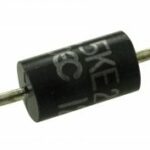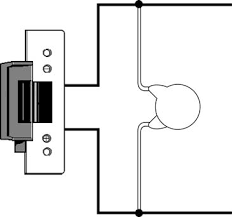Security & Access System Circuit Protection
Using transient voltage suppressing (TVS) Diodes or metal-oxide varistors (MOVs) in protecting alarm and access control circuits
Circuit protection is too often ignored and has greatly contributed to failing field components, especially control panels. When diagnosing early-failing hardware you will often find missing TVS protection, a lack of surge protection, or faulty or insufficient grounding.
 “Transients are temporary spikes or surges in voltage or current that can potentially impact circuits in ways ranging from minor glitches to catastrophic failure. A voltage transient can be anywhere from a few millivolts to thousands of volts, and they can last from nanoseconds to hundreds of milliseconds. Some transients are repetitive, such as those caused by inductive ringing in a motor, while other transients are more sporadic, such as ESD events.”
“Transients are temporary spikes or surges in voltage or current that can potentially impact circuits in ways ranging from minor glitches to catastrophic failure. A voltage transient can be anywhere from a few millivolts to thousands of volts, and they can last from nanoseconds to hundreds of milliseconds. Some transients are repetitive, such as those caused by inductive ringing in a motor, while other transients are more sporadic, such as ESD events.”
[Reference: All About Circuits – An Introduction to Transient Voltage Suppressors (TVS) ]
In the realm of security and access control systems the biggest cause of transients are electric door strikes which utilize either an electric motor or a solenoid coil for operation or Maglocks which contain large coils. Transients are often generated by inrush currents which are needed to active motors and solenoids.
Most access control panels come with either TVS diodes or MOVs but many techs ignore and often discard them because they lack the understanding of why they are important and or how to properly install them.
 2. Install the device nearest to the strike as possible. Often this is at the harness junction in the door jamb or mullion.
2. Install the device nearest to the strike as possible. Often this is at the harness junction in the door jamb or mullion. 5KE39CA Non Polarized Diode
5KE39CA Non Polarized Diode